5 Japanese Animals
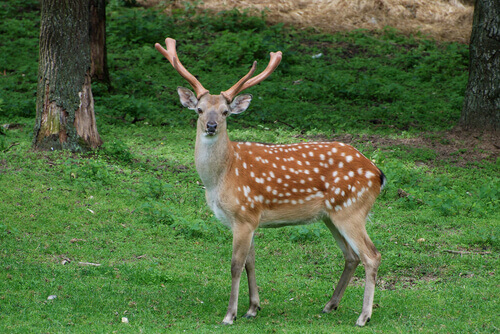
Japan has very diverse fauna despite its small size. Nowadays, among Japan’s animals, we can find endemic species, as well as those introduced by humans that have adapted to this habitat without problems. Learn more about 5 Japanese animals in this article.
Japanese animals
Comprising four main islands and about 3,000 islets, the geography of Japan is characterized by mountains and volcanoes, as well as forests and coasts. Some of Japan’s animals are:
1. Sika deer
The sika deer –see the image at the beginning of this article– is a deer that lives not only in Japan, but also in China, Vietnam and Taiwan. However, in Japan it’s not hunted, but revered. This deer is of medium size with developed horns, has a short, reddish coat with a light belly and white spots distributed all over its body.
It abounds on the island of Hokkaido where it has no predators –the wolf is extinct in Japan–and is one of the most common inhabitants of the temples and parks in the city of Nara.
2. Green pheasant
This is Japan’s national bird, which is endemic to the islands. As its name suggests, it has dark green plumage covering the breast, mantle, neck and flanks. This only applies to males, which also have bluish heads and long gray tails. Females, on the other hand, have brownish feathers with black and white spots.
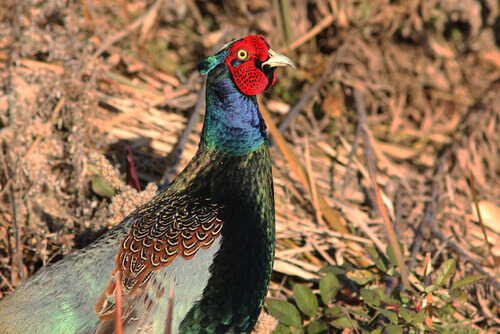
The green pheasant inhabits the forests, bushes and grasslands of the islands of Honshu, Kyushu and Shikoku. Lastly, the Japanese worship this bird which is famous for its beautiful colors.
3. Snow monkey or Japanese macaque
This primate is famous due to its reddish face and its habit of diving into hot thermal springs in the mountains during the cold season.
The snow monkey is endemic to Japan and lives in mountains and forests. It has adapted to the winter cold thanks to its thick grayish-brown fur that covers almost all of its body (except its face, buttocks, palms and soles). Its tail is very short, measuring about 1 m (3 ft), and males weigh about 15 kg (33 lb).
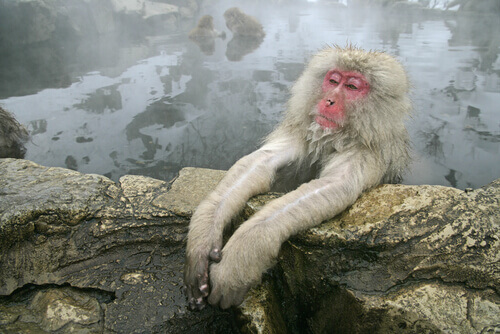
With clear diurnal and social habits, these typical Japanese monkeys form groups of up to 200 individuals, which may be related or not. The leadership of the community is assumed by males, even if only one becomes the main leader. However, females have their own hierarchy, and the longest-lived females can give orders.
4. Japanese serow
This antelope lives in the country’s dense forests, especially on the island of Honshu. This is another of the most representative Japanese animals, and in fact, it’s a national icon. Its coat is black during winter and lighter in summer, and both sexes have horns curving backwards. Also, adults can measure about 80 cm (2.6 ft) in height, and weigh about 50 kg (110 lb).
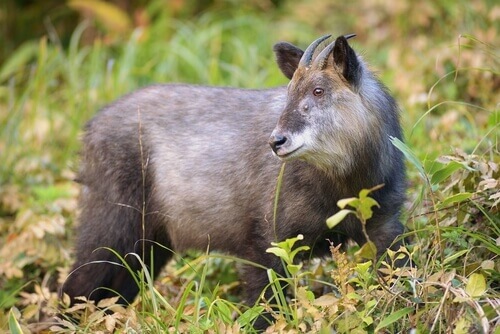
The Japanese serow is a diurnal animal that feeds on leaves, shoots, and acorns in the mornings or evenings. Finally, males live alone –marking their territory through sour and bitter secretions– and females gather with their young in small groups.
5. Oriental stork
This bird is another of the most widely distributed animals throughout the Japanese islands. The Oriental stork inhabits temperate forests and wetlands, nesting in tall trees. It feeds on fish or small animals that it catches with its long black beak. The plumage of this bird is almost all white, except for its black tail and orange legs and eyes.
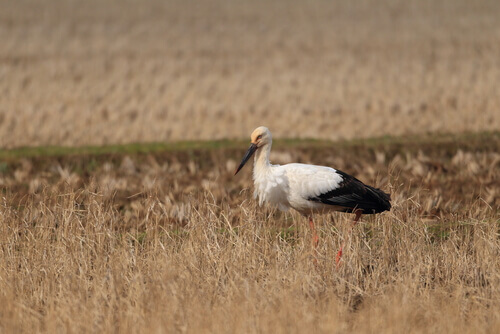
It’s larger than the common white stork, measuring about 130 cm (4.3 ft) from beak to tail and weighing about 6 kg (13 lb). Finally, its wingspan reaches 2 m (6.5 ft) in flight.